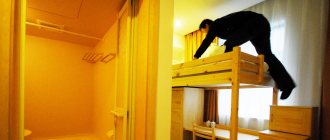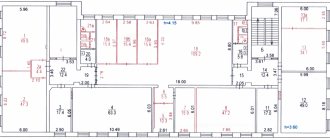On what areas can you build a private bathhouse?
Each land plot has a purpose in accordance with which it is permitted to be used. It is impossible to build a bathhouse on lands, for example, of the water fund. It can only be built:
- on lands for individual housing construction, intended for development and located in populated areas;
- on lands for personal subsidiary plots, used for personal agricultural purposes, with the right to erect buildings and structures on them;
- on dacha land plots. This type of site remained only until January 1, 2019. Then comes into force. According to this law, dacha plots will be abolished, and bathhouses will be recognized as outbuildings that can be erected on garden and vegetable plots of land, if the construction is not major.
Converting a summer house into a living space
To wait or not to wait? After the ruling of the Constitutional Court, “dacha residents” had the opportunity to “register” on their hundred square meters for permanent residence. But automatically taking advantage of this “granted” right is a big problem. There are two possible options. And I must say, both of them are not easy. Option one. Wait until changes are made to the legislation. Until this moment, the Federal Migration Service will refuse registration, and residents will have to appeal these refusals in court. The fact is that the decision of the Constitutional Court is not a norm of direct action. There are still amendments to be made to the current legislation. In particular, the law “On gardening, vegetable gardening and dacha non-profit associations of citizens”, according to which permanent registration at the place of residence is possible only in residential premises, but not in residential buildings. But this process is long, and you will have to wait more than one month. The law on amendments must undergo three readings and be approved by the President of the Russian Federation. According to the law, 6 months are allotted for everything from the date of the decision by the Constitutional Court of the Russian Federation. That is, we can wait for the corresponding law no earlier than November. The Constitutional Court recognized that the subjects of the Federation “have the right to independently determine such a registration procedure, without waiting for these norms to be prescribed in federal legislation.” Although, until today, none of the constituent entities of the Russian Federation have taken upon themselves the courage to establish such norms. Option two. If you do not intend to wait for legislators to make appropriate amendments to legislative acts, or local authorities do this earlier, you can use another method - through the court. Is there a residential building located on your garden or dacha plot? You have the right to register in it, only if this building is recognized as a residential building. Previously, the Law of the Russian Federation “On the Fundamentals of Federal Housing Policy” was in force, which provided for the right of citizens who own residential buildings located on garden plots of land and meeting the requirements of the standards for residential premises, to re-register them as residential buildings with personal plots on the right of private property. But this provision became invalid on March 1, 2005, that is, from the moment the Housing Code of the Russian Federation came into force. But a new document regulating the procedure for re-registration of a residential building into a residential building was never adopted. There are no such laws at the level of constituent entities of the Russian Federation and municipalities. Recognize it as home. How to achieve recognition of a house as a structure suitable for living all year round? You need to apply to a court of general jurisdiction to establish the legal fact of recognizing your country house as suitable for permanent residence. This application is submitted in accordance with Chapter 28 of the Civil Procedure Code of the Russian Federation. The following documents must be submitted to the court: 1. Documents on the ownership of the land and the house. 2. BTI technical passport, which gives the technical characteristics of the house - what kind of foundation, whether the walls are solid or not, etc. If your interests will be protected by a third party, then a power of attorney will be required. The submitted documents must confirm that this building is suitable for permanent residence, that the house is capital enough to live in it permanently. At the court hearing, the issue of the possibility of recognizing a residential building as a residential building will be considered. Your registration will depend on this decision. If the court finds that a residential building meets all sanitary, technical standards and rules, then it is recognized as a residential building. You can register in such a house. If the court comes to the conclusion that it is impossible to live in it year-round, and the house does not meet the established standards, then you cannot count on “registration”. The Housing Code recognizes a house as residential if it can be lived in all year round. We can definitely say that a building in which there is no electricity or heating cannot be recognized as a residential building. The same applies to temporary buildings that do not have a foundation. But the absence of a centralized sewerage system and hot water supply in a one- and two-story residential building cannot serve as a basis for declaring a residential premises unsuitable for year-round living.
This is interesting: How to Take Divided Property My Spouse Doesn’t Want to Give It Back
That is, when a citizen was provided with land, the documents indicated the permitted use - with the right to erect a residential building or with the right to erect a residential building. Those who received or acquired land with the right to erect only a residential building were unable to register in them accordingly. Although they live in such a building all year round, it has everything and stands on a strong and reliable foundation. Some of these “residential buildings”, in terms of technical and urban planning standards, are significantly superior to dilapidated, old residential buildings in villages where citizens are still registered.
Do I need to get permission?
Not every bathhouse requires obtaining a construction permit and subsequent registration. To find out if this is necessary, you should look at its project. It is the design features that determine the requirements for registration actions.
The regulations contain a list of buildings that do not require a permit. These include structures whose construction is not associated with commercial interests and profit-making.
Therefore, if you plan to build a small bathhouse that is not burdened with unnecessary structures, communications and foundations, you can do without permits.
It is necessary to obtain permission and then register the object if the bathhouse is being built as a permanent structure with one or more characteristics:
- 2- or 3-story structure;
- availability of communications;
- arrangement of living quarters, for example, a sleeping place in a recreation room.
In addition, you will have to apply for permits if the owner plans to combine a bathhouse with a residential building. And, of course, a commercial bathhouse on the site must be registered, since the purpose of its construction is to make a profit.
How to convert commercial real estate into residential: basic rules
Actually, there are as many such reasons as there are mandatory requirements. Below, we will indicate in order the most common circumstances that make it impossible to convert commercial real estate into residential real estate.
This is interesting: Ministry of Emergency Situations Pensions In 2021 Increase Latest News Yesterday
If the commercial property is a store or catering establishment, then all industrial ventilation equipment must be replaced with equipment for residential premises. All hoods and other similar structures must also be replaced or removed.
Basic construction requirements
The bathhouse must meet the requirements not only for buildings that require a permit. Construction, sanitary and fire safety regulations should be followed.
The general construction rules and standards established in “Planning and development of territories of gardening (dacha) associations of citizens, buildings and structures” by order of the Ministry of Regional Development of the Russian Federation dated December 30, 2010 No. 849 (hereinafter referred to as SNiP 30-02-97) take into account certain features:
- The bathhouse must be located at a distance of at least 1 m from the neighboring area. If neighbors have wooden buildings, the distance to them should be at least 15 m.
- The bathhouse is located no closer than 8 m from a residential building.
- From the bathhouse to the forest there should be at least 15 m, to tall trees - 4 m, to bushes - 1 m.
- It is advisable to install the structure 12 m from drinking water wells.
- The building should be located on a slight hill, this will prevent it from flooding.
- When preparing a foundation pit, you should make sure that there are no utilities underneath it.
These and other rules are determined by the functionality of the building and the safety of its use.
Is the bathhouse a capital construction project?
All persons interested in installing and placing a non-permanent object or structure, including in specially designated areas, should inquire about the requirements in force in the municipality by contacting the administration. Placement of non-capital objects and structures on your own land plot 1. Requirements for the placement of non-capital objects It is easy to guess that having ownership of a land plot is a very favorable opportunity for placing non-capital buildings, especially with the existing ban on the construction of capital objects. The placement of non-permanent buildings on a site, like any other use of it, must comply with: land legislation - first of all, the VRI of the land plot and its urban planning regulations, the general requirements of sanitary and fire standards. On the site provided for the placement of industrial facilities, non-capital production facilities can be installed - warehouses, other facilities auxiliary to the activities of the enterprise.
This is important to know: The act of accepting the transfer of an apartment under the DDU
H is the standard cost for carrying out construction control of the customer as a percentage; C - the cost of construction at the basic price level as of January 1. Capital construction projects and real estate [edit edit code] The main criterion for classifying a thing as real estate is its strong connection with the land, in which moving the thing without disproportionate damage to its purpose is impossible. Buildings, structures, objects of unfinished construction are classified as immovable things [25]. When registering a property, a structure is indicated as a building [26]. The concepts of a real estate object and a capital construction object are not identical [27]. A strong connection with the land is not the only sign by which an object can be classified as real estate.
Sanitary standards for baths
Many of the above requirements for the construction of a bathhouse directly relate to sanitary standards. What else should be taken into account for the sanitary safety of the bath?
Special sanitary standards apply to public baths. For private baths, only the general provisions of SNiP 30-02-97 are provided.
In addition to these requirements, special attention should be paid to the wastewater drainage system: you can use a connection to central communications or build a wastewater collector with filtration.
You also need to consider the use of building materials, because at high temperatures they heat up and can release harmful chemicals. For example, it is prohibited to use glass wool and polystyrene foam for thermal insulation; it is not recommended to cover walls with chipboard and plastic boards. It is necessary to take care of a good ventilation system.
The steam room has an increased fire risk. For this reason, a number of fire safety rules must be observed to reduce the level of danger:
- Wood materials should have minimal resin release.
- Any finishing wood is treated with anti-flammable compounds.
- Cover the chimney and ceiling of the room with heat-resistant materials.
- The floor and walls directly adjacent to the stove must be covered with sheets of metal or other non-combustible materials.
- The heater must be raised above floor level.
- The sauna room must have a ventilation system.
- You should have a fire extinguisher within easy reach.
- All electrical appliances must be grounded.
How to obtain a building permit
When deciding how to arrange a bathhouse on a plot of land, you need to start by obtaining a building permit. You should go to the authorized body for it if the bathhouse is a capital facility or is attached to a residential building.
The document is issued by the local government authority. An application for permission should be submitted to the municipality or to the branch of the Multifunctional Center (MFC), taking with you the following papers:
- passport;
- title document for land or an extract from the Unified State Register of Real Estate (USRN);
- site plan;
- plan diagram of the future construction with reference to the area indicating the distance to other objects.
After the local government body takes the documents for consideration, it has 10 days to make a decision on construction. A positive answer should be expected if the building meets all standards and requirements. But the authorities may refuse construction for reasons.
The validity of the permit is limited to 10 years. If you managed to obtain it, then the answer to the question of whether it is necessary to register a bathhouse on a land plot is obvious: registration is mandatory.
Step-by-step instructions for converting non-residential premises into residential premises
The service is free (unlike redevelopment of the premises, which can cost, taking into account the preparation of the project, technical and cadastral passports, about ten thousand rubles or more). After submitting an application, a response should be received within 48 working days. During this period, the City Property Department is required to either approve the transfer of the premises or refuse, citing shortcomings of the premises and legal grounds for such a decision. The refusal can be appealed in court within three months after receiving the notice .
Many entrepreneurs and lawyers are familiar with the formalities of transferring premises from residential to non-residential. Non-residential premises mean, for example, offices or production workshops. But the practice of transferring non-residential offices to the category of residential premises is less common. This is because if a person has the means, it is easier for him to purchase a standard apartment or house than to engage in this procedure, which is sometimes very difficult. Government services have much more stringent requirements for residential premises than for commercial premises. And if it is still quite easy to turn former offices into residential buildings in a multi-story building, then with dachas or houses things are different; redevelopment can turn out to be very expensive, and often simply impossible.
This is interesting: Additional payment to pension for children born in the USSR in 2020
How to register a bathhouse
Baths in the form of a permanent structure require mandatory state registration. Only in this case will the owner of the land acquire full ownership of the building.
Due to changes in legislation, those objects for which a construction permit is not mandatory are also registered.
The solution to the question of how to register a bathhouse on a plot of land in 2021 depends on the moment of its construction. If you are just going to build a commercial building, then after receiving a construction permit you should collect a package of documents for registering the bathhouse in Rosreestr.
In the case where the bathhouse was built without permission (without permission from the local administration) or did not require its presence, the owner can register the structure in the manner prescribed by the “dacha amnesty”.
Such a simplified scheme is provided for by the Federal Law of June 30, 2006 (hereinafter referred to as the law on dacha amnesty). However, it has also become more complicated since 2017.
To register a bathhouse, you now need a technical plan ordered from a cadastral engineer. Rosreestr posted accredited specialists on its website.
You can register a bathhouse built legally, as well as under the dacha amnesty, in the following ways:
- in person at the office of Rosreestr or MFC;
- by mail by writing a letter to the Rosreestr office;
- online through State Services and the Rosreestr website.
For example, an application is submitted as follows:
- We select the service “Cadastral registration and registration of rights” on the website.
- We fill out the form one by one.
- Attached are the documents.
- We pay for the services and receive confirmation of acceptance of the application.
- We receive an extract from the USRN with registration data.
Package of documents for registration
To register an outbuilding on a land plot, it is necessary to prepare the following documents:
- application or declaration in case of amnesty;
- owner's passport (representative's passport and power of attorney);
- title documents for the land plot: certificate of title, agreement, extract from the Unified State Register of Real Estate;
- boundary plan of the site;
- construction permit (not required for amnesty and in the case of non-permanent buildings);
- technical plan;
- a receipt for payment of the state fee: 350 rubles for a dacha amnesty, 2000 for a bathhouse built with permission.
Employees of the authorized bodies will formalize the outbuilding in 7-10 days. Following the procedure, the owner will be given an extract from the Unified State Register of Real Estate with the entry made.
How to convert non-residential premises into residential ones
In addition to the fact that you will have to contact the management company to convene an extraordinary meeting, you will need to obtain from this organization a technical report on the condition of the building and an extract from the house register. To do this, you will need to write the appropriate statements and provide the company employees with a passport, documents for the apartment, and a power of attorney (for a notarized person representing interests).
The law establishes two serious restrictions on the transfer of non-residential premises to residential premises, which cannot be “bypassed”. The first is the presence of lease or mortgage conditions, when an individual or legal entity has ownership of a specific premises for a certain period. The second is the discrepancy between the established standards for residential premises and the rules according to which the premises are considered unsuitable for citizens to live in. In addition, there are certain requirements for the status of residential premises, which must be confirmed by the applicant if they intend to change the status of the premises:
12 Jun 2021 uristlaw 1305
Share this post
- Related Posts
- Seizure of Common Joint Property
- When Moving to Moscow as a Pensioner, Will He Have Moscow Benefits?
- If you have served 10 years of the calendar period, you are entitled to housing
- Does a Pensioner Living in a Private House Have a Discount on Gas Payments?
Consequences of not registering a bathhouse
Typically, owners hear a positive answer to the question of whether it is necessary to register a bathhouse on an individual housing construction site. The situation is the same with plots of personal subsidiary plots and dachas. Failure to register a right can have unpleasant consequences in the form of:
- a fine of 20% of the unpaid tax amount. At the same time, you will need to pay the entire tax amount for 3 years (the rule is only for baths with an area of 50 m2 or more);
- again unregistered and recognized as unauthorized construction by a court decision. As a rule, such a decision is accompanied by many violations of building codes on the part of the owner.
In addition, an unregistered object cannot be alienated, put into operation, or connected to utility networks.
Only the construction of a bathhouse planned as a permanent structure requires obtaining permission from the local government. However, all such outbuildings should be registered with Rosreestr. To avoid problems with operation and permitting documentation, it is necessary to take into account fire and sanitary safety standards, as well as obtain a technical plan of the premises. Please note that you need to hurry up with the registration of unauthorized bathhouses, since the rules of the dacha amnesty are gradually becoming more complicated.



![Mortgage for civil servants and other public sector employees in Sberbank in [year]](https://2440453.ru/wp-content/uploads/ipoteka-dlya-gossluzhashchih-i-drugih-byudzhetnikov-v-sberbanke-v-year4-330x140.jpg)




